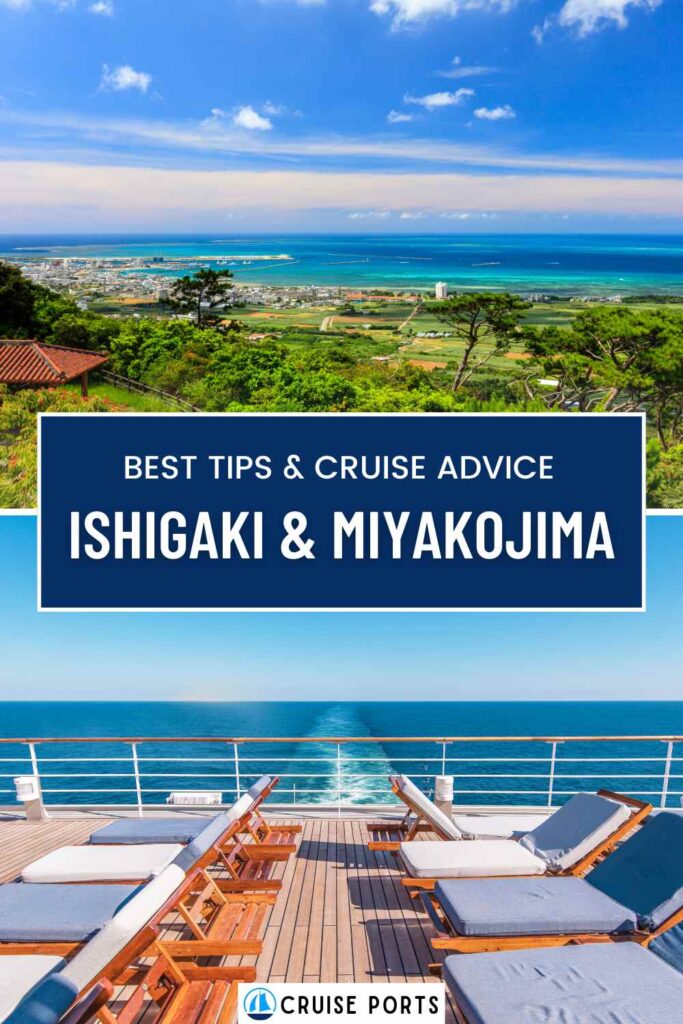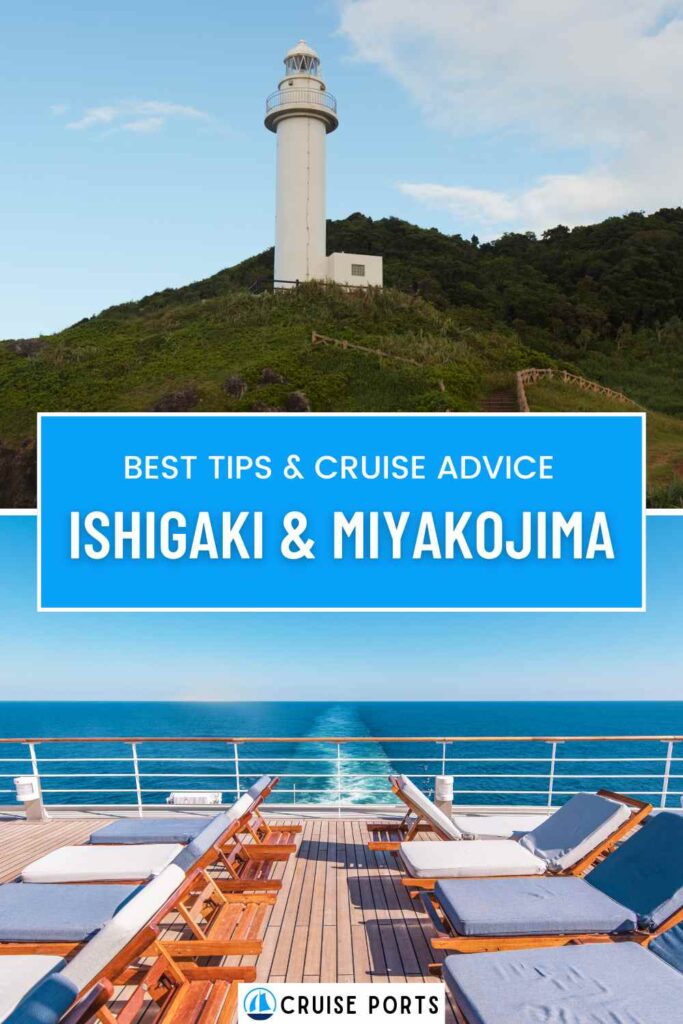Ishigaki and Miyakojima, two stunning islands in Japan’s Okinawa Prefecture, offer crystal-clear waters, lush forests, and rich local culture.
This guide reveals everything you need to know for an unforgettable cruise port stop. From choosing the best time to visit to must-see spots, prepare for a magical island getaway.
Getting to Know Ishigaki & Miyakojima
Ishigaki and Miyakojima are part of the remote Yaeyama and Miyako archipelagos in Okinawa Prefecture, far southwest of mainland Japan.
Although they share many common cultural elements with other Okinawan islands, each has its own distinct charm, ecology, and history.
Understanding these islands’ personalities is key to enjoying your short time ashore during a cruise stop.
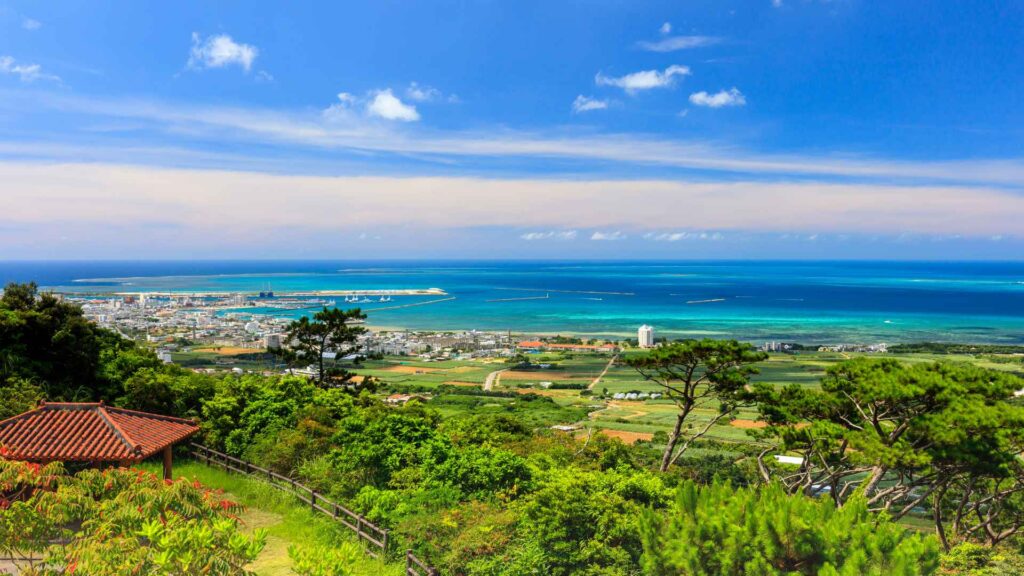
Geography and Climate
- Tropical Setting: Both islands boast a warm, subtropical climate, with mild winters and hot, humid summers. Temperatures remain pleasant throughout the year, making them ideal for water-based activities.
- Lush Landscapes: Ishigaki offers mountainous terrain and dense forest areas, while Miyakojima is relatively flat with extensive sugarcane fields and tranquil farmland.
- Pristine Coastlines: Expect to find white-sand beaches, coral reefs teeming with marine life, and calm turquoise waters perfect for snorkeling and diving.
Cultural Overview
- Ryukyuan Heritage: The local culture blends mainland Japanese influences with unique Ryukyuan traditions, reflected in customs, festivals, and cuisine.
- Laid-Back Island Vibe: Life moves at a leisurely pace here. You’ll notice warm hospitality, strong community bonds, and a focus on preserving local traditions.
- Distinct Dialects: While standard Japanese is widely understood, older generations may speak local dialects that differ significantly from mainland Japanese.
Key Differences Between the Two Islands
- Ishigaki: The region’s administrative center, Ishigaki City, features modern conveniences alongside historical sites like the Yaeyama Museum and local craft shops. The island is known for its mountainous landscape, enabling hikes and panoramic viewing points.
- Miyakojima: More pastoral and quieter, Miyakojima boasts exceptional beaches—some rank among Japan’s most beautiful. It’s also known for its vibrant coral reefs, which are among the top spots for diving in Okinawa.
With these foundational insights, you’re set to discover both islands’ enchanting qualities. Whether you prioritize outdoor adventures or cultural exploration, Ishigaki and Miyakojima deliver experiences you’ll remember for a lifetime.
Best Time to Visit
Choosing the right season can significantly enhance your Ishigaki and Miyakojima experience, especially if you plan to explore natural wonders or take part in local events.
While both islands welcome visitors year-round, certain months offer more comfortable weather and unique festivities.
Weather Patterns
- Spring (March-May): Expect mild temperatures and fewer crowds. Cherry blossoms often bloom in February or March in Okinawa, but you’ll still find springtime festivals and cultural events as you travel later in the season.
- Summer (June-August): Warm, tropical weather draws beach lovers and water sports enthusiasts, but expect occasional rain, high humidity, and increased crowds. Summer is also typhoon season, peaking in August and September, so keep an eye on weather forecasts.
- Autumn (September-November): Often considered the sweet spot—less humid than summer, but the sea remains warm for swimming. Crowds thin out, making it easier to enjoy popular attractions.
- Winter (December-February): Winters are mild compared to the mainland, but water temperatures may feel cool for swimming. However, this season offers serene landscapes, smaller crowds, and lower accommodation costs (if you plan to extend your stay beyond the cruise).
Seasonal Festivals
- Ishigaki Yaima Festival: Usually held in late spring or early summer, showcasing local performing arts, food stalls, and handicrafts.
- Harvest Festivals: On Miyakojima, traditional harvest celebrations occur in autumn, featuring music, dance, and ceremonial rituals to honor a good harvest.
- Beach Openings: Some official beach opening ceremonies take place in late spring, symbolizing the start of the swimming season.
Travel Tips per Season
- Peak Summer: If your cruise arrives in peak summer, pack breathable clothing, a hat, and plenty of sunscreen. Plan in advance for possible rainy days, and consider short inland trips to museums or markets if beaches are closed due to weather.
- Shoulder Months (March-May, October-November): Enjoy warm temperatures, fewer crowds, and good visibility for snorkeling and diving. These months are ideal for travelers looking for a more relaxed experience.
- Winter Delights: Even in winter, temperatures rarely dip too low, but bring a light jacket or sweater for breezy evenings. Enjoy less-crowded beaches, scenic drives, and local cultural experiences without the usual hustle.
No matter when you come, Ishigaki and Miyakojima’s natural wonders and friendly community spirit make every season memorable. Just tailor your plans to the climate and cultural events that suit your preferences.
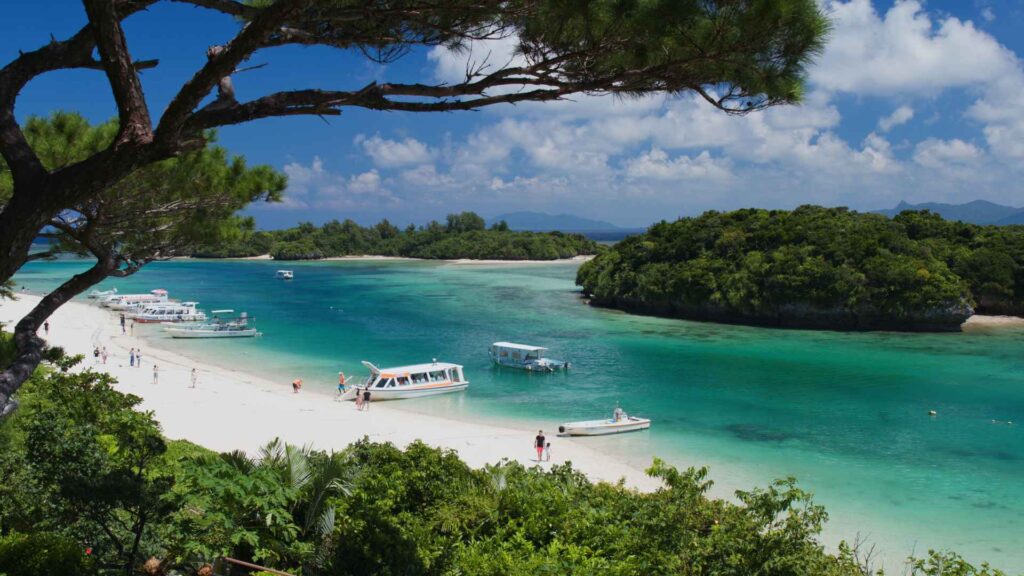
Arrival & Transportation from the Cruise Port
Arriving at Ishigaki or Miyakojima by cruise ship places you right at the doorstep of these island paradises.
To make the most of your onshore hours, it’s crucial to understand local transport options, port facilities, and how to move efficiently between top attractions.
Port Facilities Overview
- Easy Access: Both Ishigaki and Miyakojima feature relatively compact ports, making it simple to disembark and navigate on foot. Cruise terminals usually have basic amenities, such as restrooms, tourist information booths, and taxi stands.
- Tourist Information: Look for designated information counters where staff can provide maps, brochures, and guidance on local attractions. They may also help arrange short tours or day trips if you’d prefer an organized excursion.
- Baggage Services: If your cruise itinerary allows for a longer stay or if you have a later departure time, you might find temporary luggage storage facilities. Always confirm in advance, as availability can vary.
Getting Around: Taxis, Buses, and Rentals
- Taxis: Taxis are readily available at the cruise ports. They are metered, though you can negotiate a half-day or full-day fare if you plan to explore multiple spots. This option offers flexibility but can be pricier if traveling solo.
- Buses: Public buses run on set routes and schedules. They’re economical but less frequent than in major cities. Familiarize yourself with the bus timetable if you want to visit attractions off the main road.
- Rental Cars or Scooters: If you have an international driving permit recognized by Japan, renting a car or scooter can offer maximum freedom. Keep in mind that local roads may be narrow, and in Japan, you drive on the left side.
- Bicycle Rentals: For shorter distances or if you plan to stay near the port areas, bicycles provide a refreshing, eco-friendly way to explore.
Navigating Between Ishigaki & Miyakojima
- Ferry Connections: Ferries primarily operate between Ishigaki and surrounding Yaeyama Islands (like Taketomi and Iriomote). Direct ferry services to Miyakojima are more limited and can be long, so most travelers prefer air travel for island-hopping.
- Regional Flights: Small domestic flights connect Ishigaki and Miyako airports. If your cruise has a multi-day stop or you’re returning to the islands in the future, consider a short flight to explore both islands thoroughly.
- Cruise Excursions: Some itineraries offer tours that encompass visits to nearby islands. Take advantage of shore excursions organized by the cruise line if you prefer a stress-free experience.
Having a grasp of local transport helps you focus on enjoying the islands’ natural and cultural treasures without worrying about logistics. Plan ahead for the best combination of convenience and cost-effectiveness, ensuring a smooth, memorable visit.
Local Highlights & Must-See Attractions
These two islands brim with distinctive scenery, cultural gems, and serene spots that dazzle cruisers.
From unspoiled beaches to centuries-old shrines, your port days can be as relaxed or action-packed as you desire.
Iconic Beaches and Outdoor Spots
- Kabira Bay (Ishigaki): A must-see attraction often photographed for its emerald-green waters. While swimming is not allowed due to strong currents and the delicate ecosystem, you can take a glass-bottom boat tour to marvel at the underwater life.
- Yonaha Maehama Beach (Miyakojima): Renowned for its lengthy stretch of powdery white sand, this beach is perfect for sunbathing, swimming, or simply soaking up the scenery.
- Sunset Viewing: Both islands deliver jaw-dropping sunsets. Look for vantage points like Cape Hirakubozaki on Ishigaki or Nishihenna Cape on Miyakojima to witness the sky ablaze in vivid colors.
Historic and Cultural Sights
- Tōrin-ji Temple (Ishigaki): A tranquil Buddhist temple known for its large old banyan tree and peaceful grounds. Wander through and learn about the island’s religious heritage.
- Harimizu Utaki (Miyakojima): A sacred site reflecting the strong Ryukyuan spiritual tradition. Locals believe utaki spots are inhabited by deities, making them important ceremonial grounds.
- Local Museums: If you’re curious about regional customs, pop into a local museum like the Yaeyama Museum on Ishigaki for exhibits on folk culture, textiles, and local flora and fauna.
Unique Island Landmarks
- Ishigaki Limestone Cave: An underground wonderland offering a fascinating walk through stalactites, stalagmites, and an ancient geological story.
- Hirara City on Miyakojima: The island’s central hub, home to colorful shops, restaurants, and a bustling morning market. A convenient place to pick up souvenirs and sample local snacks.
- Traditional Okinawan Residences: Keep an eye out for old-style homes with red-tiled roofs and shisa statues (lion-dog guardians) perched atop gates, symbolizing protection from evil spirits.
To maximize your time, consider what resonates most with your interests—be it nature, heritage, or a mix of both. You’ll depart with not only stunning photos but also a deeper appreciation for what makes these islands unique.
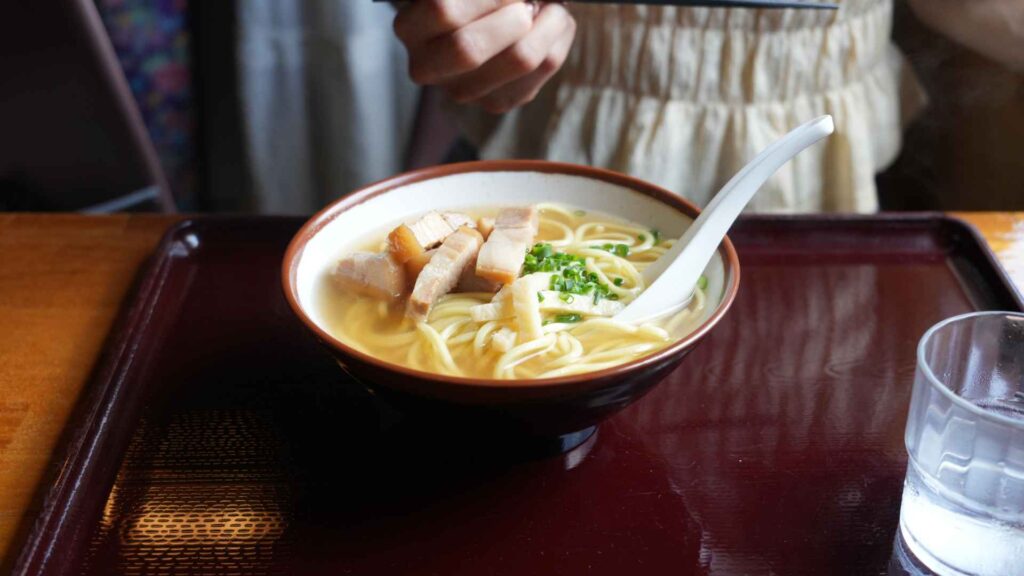
Outdoor Adventures & Activities
Beyond simply lounging on beautiful beaches, Ishigaki and Miyakojima offer outdoor pursuits for thrill-seekers and nature lovers alike.
From exploring vibrant coral reefs to trekking through lush terrain, there’s an activity to satisfy every island wanderer.
Snorkeling and Diving
- Coral Reefs: Dive sites around both islands are famed for their untouched coral reefs and diverse marine life, including colorful fish, sea turtles, and even manta rays at certain locations.
- Beginner-Friendly: If you’re new to snorkeling or diving, many guided tours cater to beginners, providing equipment and teaching basic techniques so you can explore safely.
- Manta Scramble (Ishigaki): A globally renowned diving spot where manta rays gather in large numbers, particularly during summer months.
Hiking and Nature Tours
- Ishigaki’s Mt. Omoto: The highest peak in Okinawa, offering moderately challenging trails through dense forests. The summit rewards hikers with panoramic views of the island.
- Ranger-Led Walks: Some tours focus on educating visitors about the region’s flora, fauna, and conservation efforts. Great for travelers who want insight into the local ecosystem.
- Scenic Coastline Strolls: For a gentler option, explore coastal walking paths that unveil hidden coves, dramatic rock formations, and serene ocean vistas.
Water Sports and More
- Kayaking: Paddle along calm coastal areas or through mangrove-lined rivers (like the Miyara River on Ishigaki). A quiet, eco-friendly way to see wildlife.
- Stand-Up Paddleboarding (SUP): Popular in sheltered waters around Miyakojima, SUP allows you to glide over vibrant coral reefs beneath you.
- Jet Ski and Banana Boat Rides: For a jolt of adrenaline, beaches in tourist-friendly areas rent out jet skis and offer fun water rides.
Whether you’re diving into the deep, hiking to new heights, or coasting along serene waters, these activities let you fully immerse in the islands’ natural wonders. Check weather conditions, follow safety guidelines, and enjoy the exhilarating outdoor side of Ishigaki and Miyakojima.
Culinary Delights & Dining Spots
No trip to these Okinawan gems is complete without savoring their distinctive local flavors. Ishigaki and Miyakojima cuisines celebrate fresh ingredients, time-honored techniques, and a dash of Ryukyuan tradition. From casual street fare to refined island dining, your taste buds are in for a treat.
Local Cuisine and Specialties
- Ishigaki Beef: Famous across Japan for its rich marbling and melt-in-your-mouth texture. Grilled, seared, or served in hot pots, this local beef is a must-try.
- Yaeyama Soba: Unlike typical Japanese soba (made from buckwheat), Yaeyama soba uses wheat flour noodles in a flavorful pork-based broth. Toppings often include seasoned pork belly, fish cake, and green onions.
- Tropical Fruits: Lush farmland on both islands produces sweet mangoes, pineapples, and dragon fruits. Sample them fresh or find them blended into smoothies and desserts.
Recommended Restaurants and Markets
- Ishigaki Public Market: Ideal for discovering local produce, fresh fish, and a variety of island goodies. Vendors here are friendly and often offer free tastings.
- Miyakojima City Markets: Venture into smaller local markets for an authentic shopping experience. Look for stalls selling homemade pickles, smoked fish, and local pastries.
- Beachfront Cafés: Many coastal areas have casual eateries serving fresh seafood and island-inspired fusion dishes. Dine alfresco to enjoy the sea breeze and scenic views.
- Upscale Izakayas and Steakhouses: For a more refined dining experience, find spots specializing in Ishigaki beef or creative Okinawan-Japanese fusion menus.
Food Etiquette and Tips
- Portions: Local servings can be modest compared to Western standards, so order multiple dishes if you want a full spread.
- Ingredient Awareness: If you have dietary restrictions, use basic Japanese phrases or show a translated card indicating your allergies.
- Tipping: Tipping isn’t customary in Japan, but expressing gratitude through polite words and gestures is appreciated.
- Locally Inspired Beverages: Try awamori, a traditional Okinawan distilled spirit. Savor it straight or mixed in cocktails.
Your palate will undoubtedly thank you for indulging in the islands’ fresh flavors. Embrace every bite—whether it’s a savory bowl of Yaeyama soba or perfectly grilled Ishigaki beef—as each dish offers a taste of local heritage.
Shopping & Souvenirs
From handcrafted keepsakes to tasty island treats, Ishigaki and Miyakojima present a treasure trove of unique items you can bring home. Shopping here goes beyond typical tourist kitsch—expect to find local craftsmanship and cultural significance woven into each product.
Traditional Crafts and Island Keepsakes
- Ryukyuan Textiles: Beautiful handwoven or dyed fabrics (like bingata) make for colorful clothing, table runners, and decorative wall hangings.
- Shisa Statues: These guardian lion-dogs, typically displayed in pairs, symbolize protection and good fortune. Look for intricately painted ceramics or carved wooden versions.
- Shell and Coral Accessories: Artisans craft jewelry and decorative pieces using ethically sourced shells and coral fragments. They’re perfect for ocean lovers wanting a tangible reminder of island life.
Local Markets and Artisan Shops
- Island Flea Markets: Occasionally, local communities hold flea markets where you can find secondhand kimonos, antique pottery, and other one-of-a-kind treasures.
- Boutique Galleries: Some shops feature contemporary Okinawan art, prints, and photography capturing the islands’ vibrant landscapes and cultural heritage.
- Miyakojima & Ishigaki Souvenir Streets: Dedicated commercial streets near the cruise ports or town centers often house a cluster of souvenir shops. You’ll likely find an array of gifts to suit every budget.
Popular Souvenirs to Bring Home
- Ishigaki Salt: Used in many local recipes, it adds a distinctive flavor to dishes. Its purity and mineral content make it a prized culinary gift.
- Brown Sugar Products: Okinawa’s sugarcane farms produce deeply flavored brown sugar blocks and candies. They’re sweet reminders of the region’s agricultural roots.
- Awamori: This traditional spirit is a prime gift for family or friends who appreciate unique liquor. Look for special edition bottles featuring local designs.
- Local Snacks: Items like chinsuko (Okinawan shortbread cookies), sata andagi (donut-like treats), and tropical fruit jams travel well and delight taste buds.
Let the joy of exploration continue in these shops and markets. Hunting for souvenirs not only supports local artisans but also enables you to preserve your island memories for years to come.
Additional Tips for Travelers
Beyond beaches and local cuisine, a rewarding visit to Ishigaki and Miyakojima hinges on cultural sensitivity, practical knowledge, and an appreciation for the natural environment. These pointers will help you travel responsibly and make the most of your short time ashore.
Language and Etiquette
- Basic Japanese Phrases: Although many people in tourist areas speak some English, learning a few Japanese words—such as “arigato” (thank you) and “sumimasen” (excuse me)—can go a long way in showing respect.
- Shoes Off: Certain venues, particularly traditional homes or specific cultural sites, require guests to remove their shoes at the entrance.
- Quiet Respect: Local temples, shrines, and utaki (sacred sites) may request quiet or limited photography out of respect for worshippers and deities.
Money Matters and Connectivity
- Cash is King: Many smaller shops, local restaurants, and taxi drivers prefer cash. Carry enough yen for your daily needs if you plan to venture away from major tourist areas.
- Credit Cards: Larger establishments, hotels, and some restaurants accept credit cards, but always confirm in advance.
- Wi-Fi and SIM Cards: Tourist information centers and cafés often offer free Wi-Fi, though signals can be spotty in remote areas. If you need reliable internet, pick up a SIM card or portable Wi-Fi at major airports before you arrive in the islands.
Sustainable and Respectful Tourism
- Reef-Safe Sunscreen: Help protect the coral reefs by choosing sunscreens free of oxybenzone and other chemicals harmful to marine life.
- Leave No Trace: Dispose of trash responsibly and refrain from taking coral or shells as souvenirs to preserve the fragile ecosystem.
- Support Local Businesses: Engage with small, family-run shops, eateries, and tour operators that practice ethical, eco-conscious methods.
Embracing local customs, carrying sufficient cash, and being mindful of environmental impact ensure a smoother, more meaningful travel experience.
By respecting local traditions and natural surroundings, you’ll leave with not just wonderful memories but also the gratitude of those who call these islands home.
